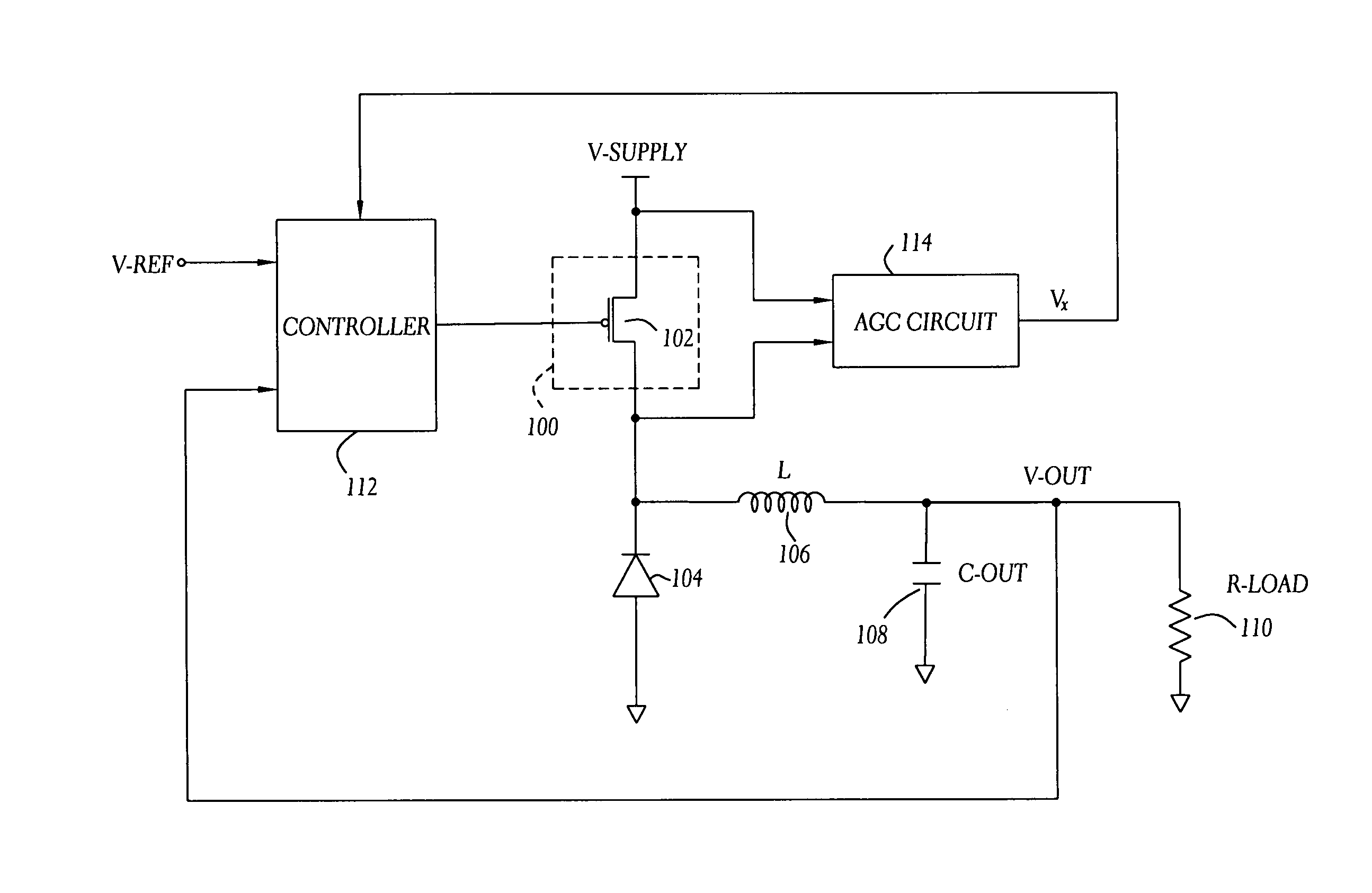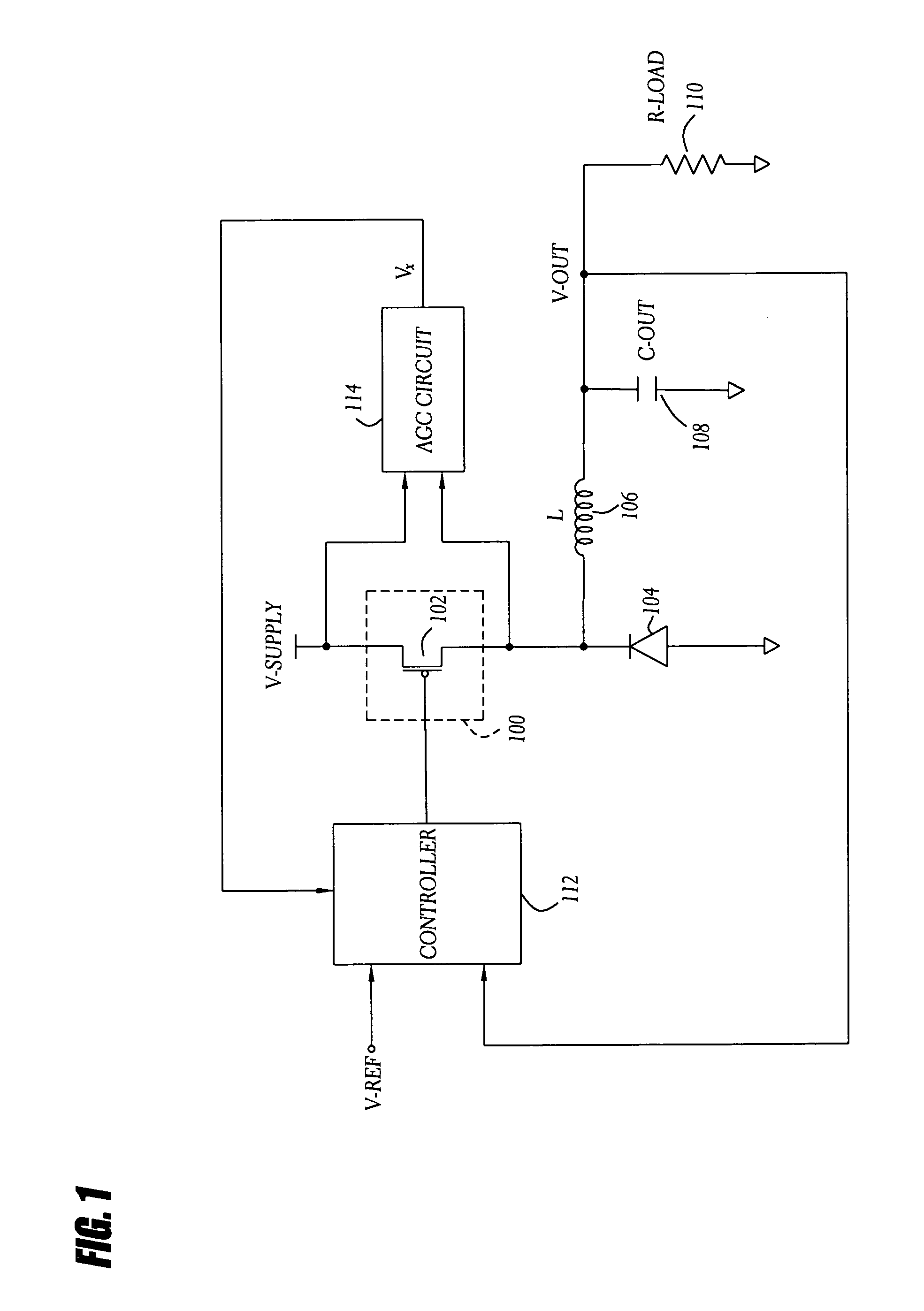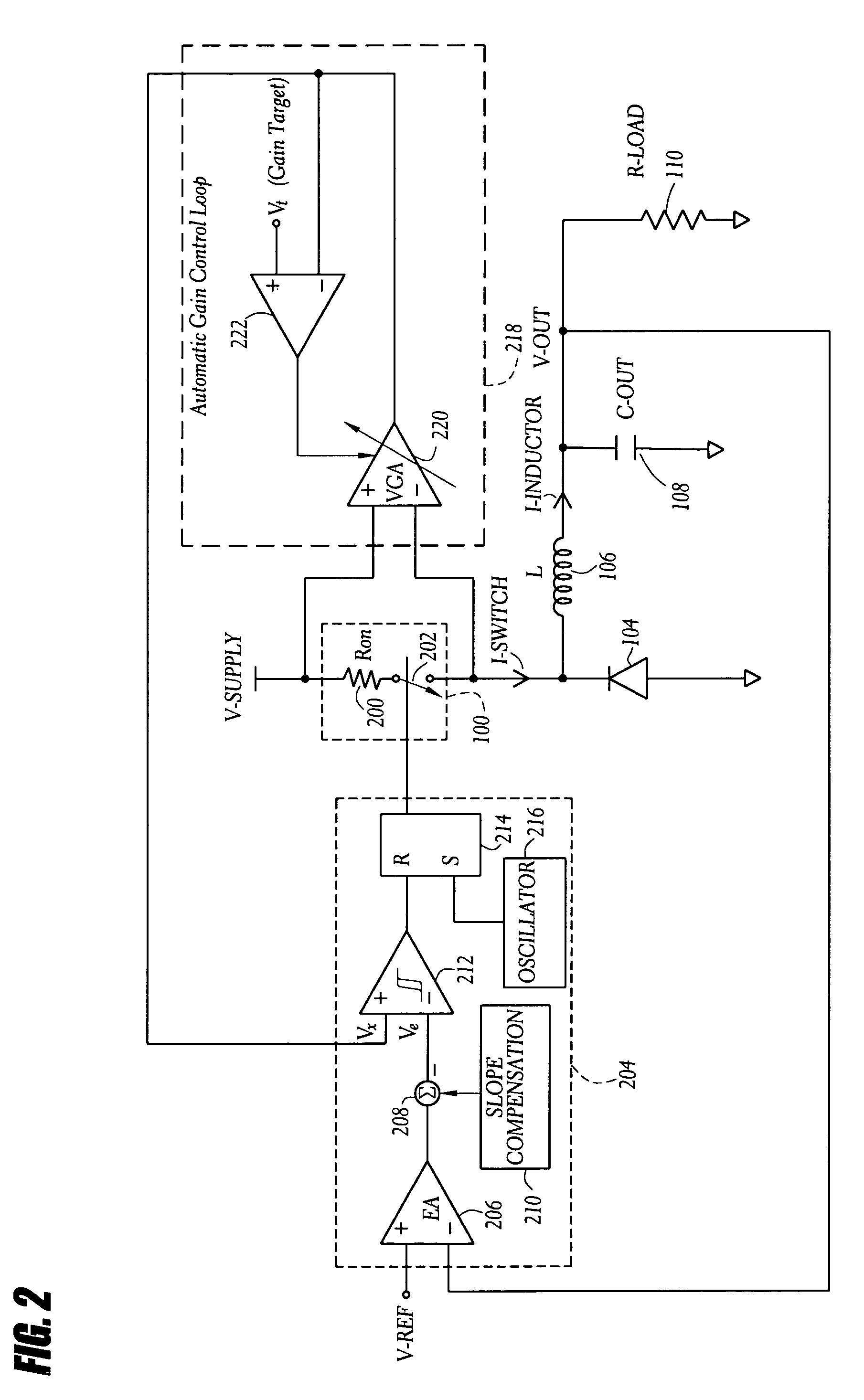Automatic gain control technique for current monitoring in current-mode switching regulators
a current-mode switching regulator and automatic gain control technology, applied in the direction of power conversion systems, dc-dc conversion, instruments, etc., can solve the problems of reducing power efficiency, difficult to implement third technique, and inability to achieve second techniqu
- Summary
- Abstract
- Description
- Claims
- Application Information
AI Technical Summary
Benefits of technology
Problems solved by technology
Method used
Image
Examples
Embodiment Construction
Embodiments of the present invention will be described hereinafter with reference to the drawings. FIG. 1 is a block diagram of one embodiment of a current-mode buck converter using adaptive current sensing (or an automatic gain control technique for current monitoring). The current-mode buck converter accepts a DC source voltage (V-SUPPLY) of one level (e.g., power from a battery) and produces a DC output voltage (V-OUT) of another, and typically lower, level. A first semiconductor switch (or high-side switch) 100 is coupled between the DC source voltage (or supply voltage) and a first terminal of an inductor (L) 106. A second terminal of the inductor 106 is coupled to the DC output voltage. An output capacitor (C-OUT) 108 and an output resistor (R-LOAD) 110 are coupled to the DC output voltage to represent a load (e.g., a microprocessor). The output capacitor 108 can also represent filter capacitance used to reduce ripple in the DC output voltage. A diode 104 (or alternately a sec...
PUM
 Login to View More
Login to View More Abstract
Description
Claims
Application Information
 Login to View More
Login to View More - R&D
- Intellectual Property
- Life Sciences
- Materials
- Tech Scout
- Unparalleled Data Quality
- Higher Quality Content
- 60% Fewer Hallucinations
Browse by: Latest US Patents, China's latest patents, Technical Efficacy Thesaurus, Application Domain, Technology Topic, Popular Technical Reports.
© 2025 PatSnap. All rights reserved.Legal|Privacy policy|Modern Slavery Act Transparency Statement|Sitemap|About US| Contact US: help@patsnap.com



